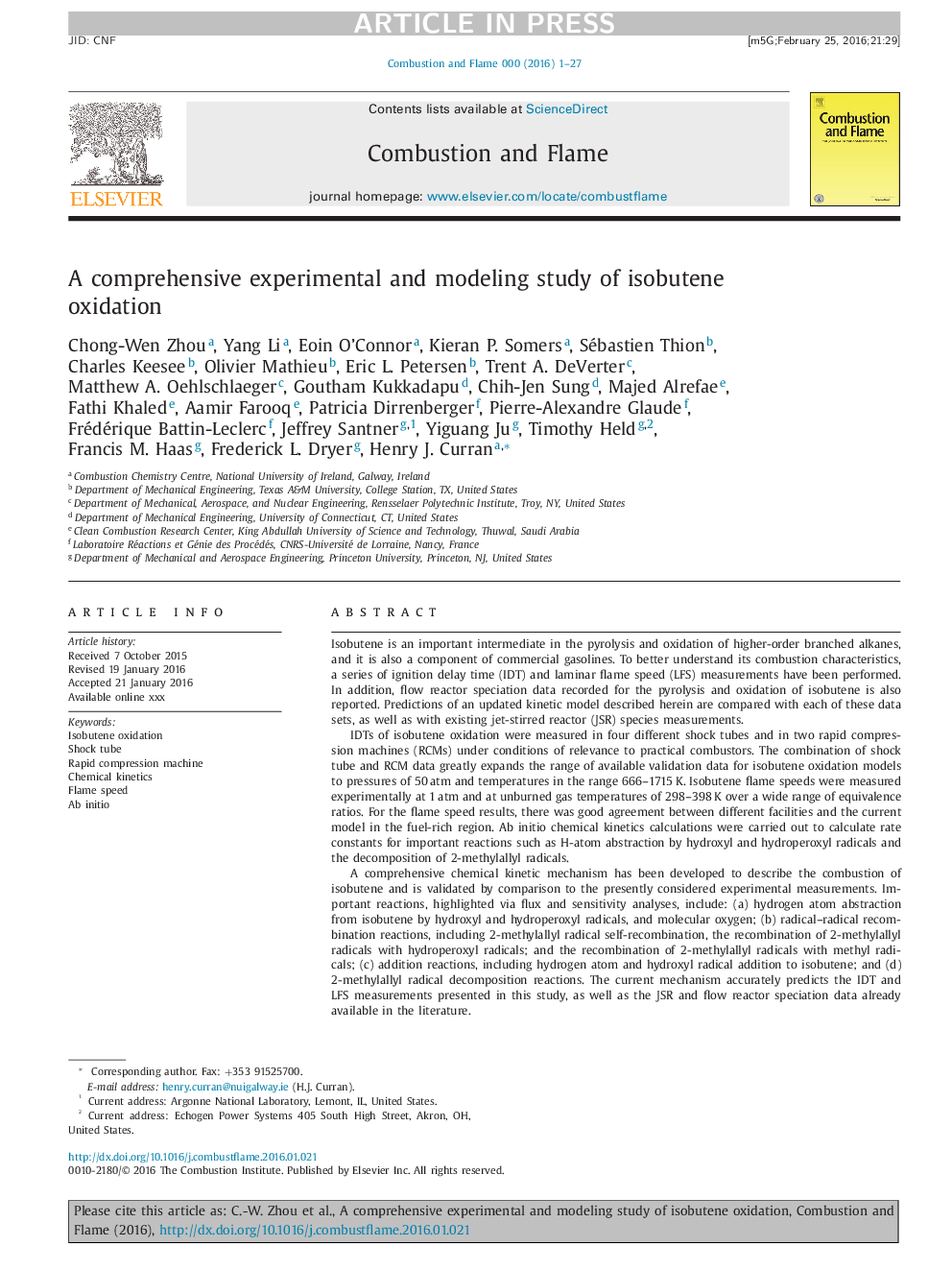| Article ID | Journal | Published Year | Pages | File Type |
|---|---|---|---|---|
| 6594129 | Combustion and Flame | 2016 | 27 Pages |
Abstract
The differences in low-temperature chemistry between alkanes and alkenes are also highlighted in this work. In normal alkanes, the fuel radical á¹ adds to molecular oxygen forming alkylperoxyl (RÈ®2) radicals followed by isomerization and chain branching reactions which promote low-temperature fuel reactivity. However, in alkenes, because of the relatively shallow well (â¼20 kcal mol-1) for RÈ®2 formation compared to â¼35 kcal mol-1 in alkanes, the á¹Â + O2 â RÈ®2 equilibrium lies more to the left favoring á¹Â + O2 rather than RÈ®2 radical stabilization. Based on this work, and related studies of allylic systems, it is apparent that reactivity for alkene components at very low temperatures (<800 K) emanates from hydroxyl radical addition followed by addition of molecular oxygen to radical. At intermediate temperatures (800-1300 K), alkene reactivity is controlled by hydrogen abstraction by molecular oxygen and the reactions between resonantly stabilized radicals and hydroperoxyl radicals which results in chain branching. At higher temperatures (>1300 K), the reactivity is mainly governed by the competition between hydrogen abstractions by molecular oxygen and È®H radicals.
Related Topics
Physical Sciences and Engineering
Chemical Engineering
Chemical Engineering (General)
Authors
Chong-Wen Zhou, Yang Li, Eoin O'Connor, Kieran P. Somers, Sébastien Thion, Charles Keesee, Olivier Mathieu, Eric L. Petersen, Trent A. DeVerter, Matthew A. Oehlschlaeger, Goutham Kukkadapu, Chih-Jen Sung, Majed Alrefae, Fathi Khaled, Aamir Farooq,
